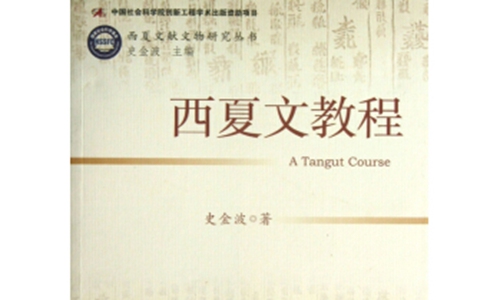First English book on China’s Western Xia Dynasty published overseas
By Chen Xi Source: Global Times Published: 2020/7/15 14:48:40

Book A Tangut Coursethat Photo: Snapshot of Jingdong online store
The English version of A Tangut Course, a book that systemically introduces the history and culture of China's Western Xia Dynasty (1038-1227), has become the first book about the dynasty to be published overseas, Chinese experts said on Wednesday.
The book is a monograph that introduces the Western Xia Dynasty's language, history and literature.
Western Xia Dynasty, also known as the Tangut Empire, was an important dynasty in ancient China that ruled much of today's Gansu Province, Xinjiang Uygur Autonomous Region and the Ningxia Hui Autonomous Region in Northwest China as well as North China's Inner Mongolia Autonomous Region. The main ethnic group was the Tangut people, who spoke the Tangut language.
After the empire was destroyed by the Mongols in 1227, most of its written records and architecture were ruined. Since the beginning of the 20th century, however, a large number of texts and relics from the empire have been unearthed and the Western Xia studies have become a highly internationalized course in Chinese studies. For example, German scholars used the Chinese version of this book as part of the teaching materials to establish Tangut language courses at the University of Leipzig, according to a report from China News.
The book was written by Shi Jinbo, a member of the Academic Committee at the Chinese Academy of Social Sciences, and was translated by Li Hansong, a PhD professor at Harvard University. It was published by Dutch publisher Brill.
"The translation of the Western Xia studies in China into foreign languages will enhance the international influence of Western Xia studies and Chinese academics," Du Jianlu, dean of the Western Xia Studies Academy of Ningxia University, told the Global Times on Wednesday.
He added that the Tangut language is similar to the language of the Qiang ethnic group, one of China's ethnic minorities.
According to Du, since the Tangut language is extinct, current research is verified based on unearthed documents.
However, due to the cultural relic aggression from some foreign explorers in the early 20th century, a large number of documents and cultural relics from the Western Xia Dynasty were stolen or destroyed, increasing the difficulties when it comes to research.
Posted in: RELATIONSHIPS,CULTURE & LEISURE